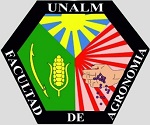Clonal propagation of Stevia (Stevia rebaudiana Bertoni) advanced lines in a Temporary Immersion Bioreactor System
DOI:
https://doi.org/10.21704/pja.v6i3.1980Keywords:
sweetener, in vitro, bioreactor, genotype, SteviaAbstract
Stevia (Stevia rebaudiana A Bertoni), is a native species from Paraguay and Brazil, which is used as a natural sweetener with medicinal value in the preparation of beverages, sweets and others. Its propagation through sexual seeds is limited by their poor quality, for this reason its asexual propagation is promoted through different in vitro techniques. In the present investigation, the response of three genotypes of stevia to propagation in Temporary Immersion Bioreactor (TIB) System was studied with four different media as a treatments. The results showed that the treatment M2 (MS + 1 mg/L BAP + 0.1mg/L NAA + 30 g Sucrose) gave the best results for all evaluated characteristics with the exception of the number of rootlets/seedling and being the treatment M1 (MS without growth regulators + 30 g of Sucrose) achieved the highest number of roots and good values for the other characteristics. High quality plants were achieved and the genotype that responded best was IBT-1, and in the acclimatization phase a high survival rate was obtained.
Downloads
References
Aguilar, D., Rodríguez, J. L., Piña J., & Silva, V. (2019). Propagación in vitro de Stevia rebaudiana y análisis preliminar de esteviósidos. Revista Mexicana de Ciencias Agrícolas, 10(1), 197–204. https://doi.org/10.29312/remexca.v10i1.1543
Akita, M., Shigeoka, T., Koizumi, Y., & Kawamura, M. (1994). Mass propagation of shoots of Stevia rebaudiana using a large scale bioreactor. Plant Cell Reports,13(13-14), 180–183. https://doi.org/10.1007/BF00239888
Alexander, V., & Esyanti, R. (2016). Stimulation of Stevioside accumulation on Stevia rebaudiana (Bertoni) shoot culture induced with red LED light in TIS RITA Bioreactor. System. International Journal of Biotechnology and Bioengineering, 10(12), 803–808.
Alvarenga, S., & Salazar, T. (2015). Micropropagación masiva de Stevia rebaudiana Bertoni en sistemas de inmersión temporal. Cultivos Tropicales, 36(3), 50–57.
Bayraktar, M. (2019). Micropropagation of Stevia rebaudiana bertoni using RITA® bioreactor. HortScience, 54(4), 725–731. https://doi.org/10.21273/HORTSCI13846-18
Escalona, M., Lorenzo, B., Gonzáles, M., Daquinta, M., Gonzáles, D., & Borroto, G. (1999). Pinneapple (Ananas comosus L. Merr) micropropagation in temporary inmmersion systems. Plant cell reports, 18, 743–748.
Hossain, M., Islam, M., Islam, M. A., & Akhtar, S. (2017). Cultivation and uses of Stevia (Stevia rebaudiana Bertoni): A review. African Journal of Food, Agriculture, Nutrition and Development, 17(4), 12745–12757.
Melviana, A., Esyanti, R., Mel, M., & Setyobudi, R. (2021a). Biomass enhancement of Stevia rebaudiana Bertoni shoot culture in temporary immersion system (TIS) RITA® bioreactor optimized in two different immersion periods. E3S Web of Conferences, 226, 1–9. https://doi.org/10.1051/e3sconf/202122600007
Melviana, A., Esyanti, R., Setyobudi, R., Mel, M., Adinurani, P., & Burlakovs, J. (2021b). Gene Expression Related to Steviol Glycoside Synthesis Produced in Stevia rebaudiana (Bert.) Shoot Culture Induced with High Far-Red LED Light in TIS RITA® Bioreactor System. Sarhad Journal of Agriculture, 37(1), 1–8.
Oviedo, P. D. (2017). Comparación de los parámetros de crecimiento y contenido de edulcurantes y antioxidante entre plantas de Stevia rebaudiana Bertoni propagadas en biorreactores de inmersión temporal y por esquejes. [Master’s thesis, Instituto Politécnico Nacional Yautipec de Zaragoza, México]. Repositorio Dspace. http://tesis.ipn.mx/handle/123456789/25433
Ramírez, M., Iglesias, L., Ramírez, G., & Hernández, E. (2016). Micropropagation of Stevia rebaudiana Bert. in temporary immersion systems and evaluation of genetic fidelity. South African Journal of Botany, 106, 238–243. https://doi.org/10.1016/j.sajb.2016.07.015
Rosales, C., Brenes, J., Salas, K., Arce, S., & Abdelnour, A. (2018). Micropropagación de Stevia rebaudiana en sistemas de inmersión temporal para incursionar en la producción hortícola. Revista Chapingo, Serie Horticultura, 24(1), 69–84. https://doi.org/10.5154/r.rchsh.2017.08.028
Yadav, A., Singh, S., Dhyani, D., & Ahuja, P. (2011). A review on the improvement of stevia [Stevia rebaudiana (Bertoni)]. Canadian Journal of Plant Science, 91(1), 1–27. https://doi.org/10.4141/cjps10086
Vives, K., Andújar, I., Lorenzo, J. C., Concepción, O., Hernández, M., & Escalona, M. (2017). Comparison of different in vitro micropropagation methods of Stevia rebaudiana B. including temporary immersion bioreactor (TIB®). Plant Cell, Tissue and Organ Culture, 131(1), 195–199. https://doi.org/10.1007/s11240-017-1258-8
Villamarín, D., Oviedo, D., Evangelista, S., Sepúlveda, G., Molina, J., & Rodríguez, M. (2020). Trichoderma asperellum, an inoculant for the production os steviol glycosides in Stevia rebaudiNAA Bertoni plants micropropagated in a temporary immersion bioreactor. Revista Mexicana de Ingeniería Química, 19(3), 1153–1161. https://doi.org/10.24275/rmiq/Bio947
Downloads
Published
Issue
Section
License
Copyright (c) 2022 María de Lourdes Tapia y Figueroa, Luz R. Gómez Pando

This work is licensed under a Creative Commons Attribution 4.0 International License.










